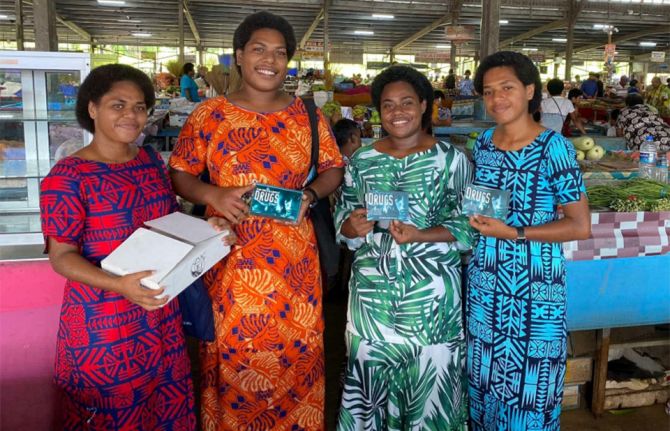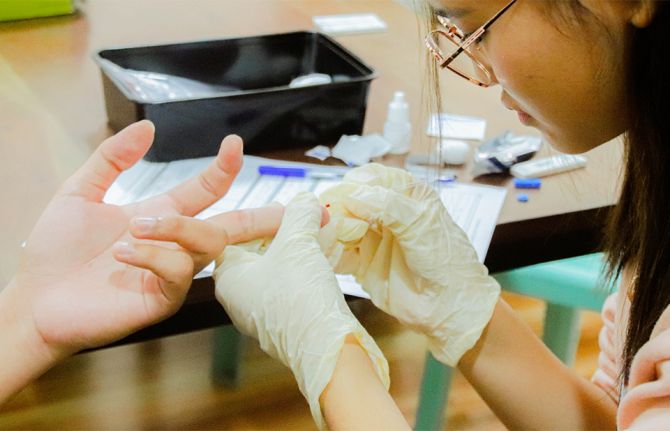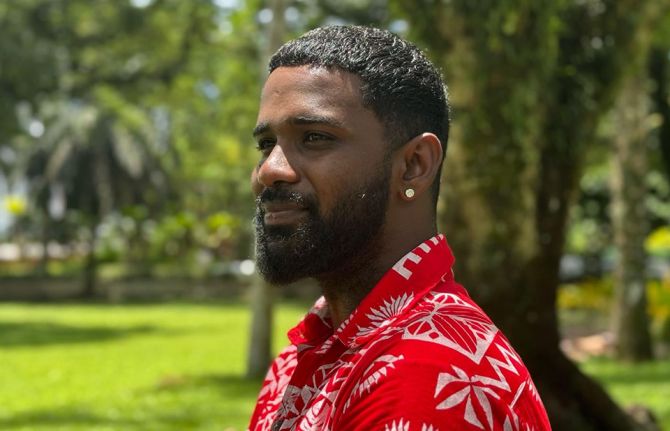
Feature Story
Injecting drug users take central role in anti-stigma film
10 August 2009
10 August 2009 10 August 2009
A frame from the film Suee (Needle), unveiled during the satellite session, ‘Reforming treatment environments – How to make compulsory drug treatment HIV friendly’ at ICAAP09.
The lives of injecting drug users and the HIV-related stigma and discrimination they face was one focus of the IX International Congress on AIDS in Asia and the Pacific as the film Suee (Needle) was launched by Response Beyond Borders, the Asian consortium on drug use HIV, AIDS and poverty.
Unveiled during the satellite session, ‘Reforming treatment environments – How to make compulsory drug treatment HIV friendly’, the film gives a voice to this vulnerable group with anti-stigma messages conveyed by the injecting drug users themselves. It was directed by award-winning Indian movie director, author and screen-writer, Sai Paranjpye, who set out to present an uncompromising insight into a world where HIV prevalence is disproportionately high.
Ms Paranjpye, a Cannes Film Festival award winner, worked closely with injecting drug users on Suee and spent time interviewing them on location and involving them as actors in the film. They ‘own’ the project as much as is practically possible. She also consulted a full range of partners and obtained feed back on the script and other help from NGOs working in HIV prevention with injecting drug users, especially Sharan in Delhi and Sankalp in Mumbia. She also received input from the International Center for Research on Women and World Bank teams, among others.
Suee explores a number of areas in the lives of injecting drug users including treatment, care, peer and community support, rehabilitation and the workplace. It is intended to convey messages of hope and not to trigger reactions of pity or fear; empowering the audience by raising awareness and presenting facts in a non-judgmental way. Made for general consumption, the film can also be used in youth campaigns, providing education and information for young people to help prevent HIV and reduce both risk and vulnerability.
The film emerged from the South Asia Region Development Marketplace (SAR DM), an initiative spearheaded by the World Bank. It consists of a competitive grants programme that identifies and supports small scale projects demonstrating an innovative approach to reducing HIV stigma and discrimination in the region. 26 civil society organisations from across South Asia won grants of US$ 40,000 each to bring their ideas to fruition.
Ms Paranjpye has used her SAR DM award to produce not only the Suee film but another, called “The sound of the horn”, which deals with truck drivers.
Stigma and discrimination are seen as major barriers to scaling up HIV prevention services in the region. They marginalise those living with the virus and contribute to their social isolation and rejection. They also discourage vulnerable groups from accessing HIV treatment, care and support services.
It is hoped that Suee, once widely disseminated, will take its place among a range of interventions helping to reduce stigma and discrimination against South Asia’s injecting drug users.
The film was selected by the screening committee of the Congress and will be shown again on August 11.
Note: Partners and sponsors of the South Asia Region Development Marketplace include: UNAIDS, UNICEF, UNODC, UNDP, the Global Fund, the Government of Norway, the International Center for Research on Women, the International Finance Corporation, and the Swedish International Development Cooperation Agency (SIDA)
Injecting drug users take central role in anti-st
IX International Congress on AIDS in Asia and the Pacific
South Asia Region Development Marketplace
Cosponsors:
World Bank
United Nations Children’s Fund
United Nations Office on Drugs and Crime
United Nations Development Programme
Partners:
Sankalp Rehabilitation Trust
Sharan
International Center for Research on Women
The Global Fund to Fight AIDS, Tuberculosis and Malaria
International Finance Corporation
Swedish International Development Cooperation Agency
Feature stories:
Migrant workers and HIV vulnerability in South Asian and South East Asian countries (18 may 2009)
'Never abandon, never give up’: ILO film helps China’s migrant workers challenge AIDS stigma (30 April 2009)
International Harm Reduction conference opens in Bangkok (20 April 2009)
OPINION: HIV and drugs: two epidemics - one combined strategy (20 April 2009)
‘Love and Relationships’: Film festival in Cambodia addresses HIV prevention (06 April 2009)
UNODC and Iran sign agreements to reduce vulnerability of women and Afghan refugees to drugs and HIV (24 March 2009)
Injecting drug use and HIV: Interview with UNAIDS Team Leader, Prevention, Care and Support team (11 march 2009)
OPINION: Silence on harm reduction not an option (11 March 2009)



